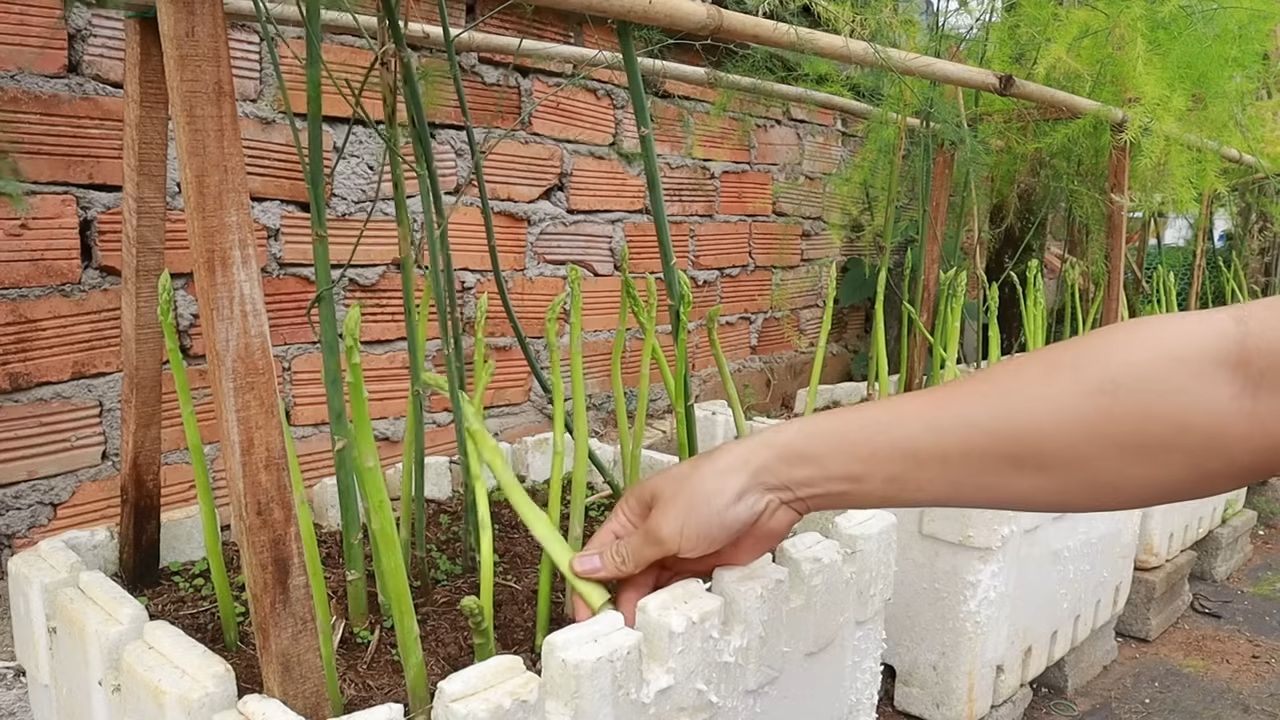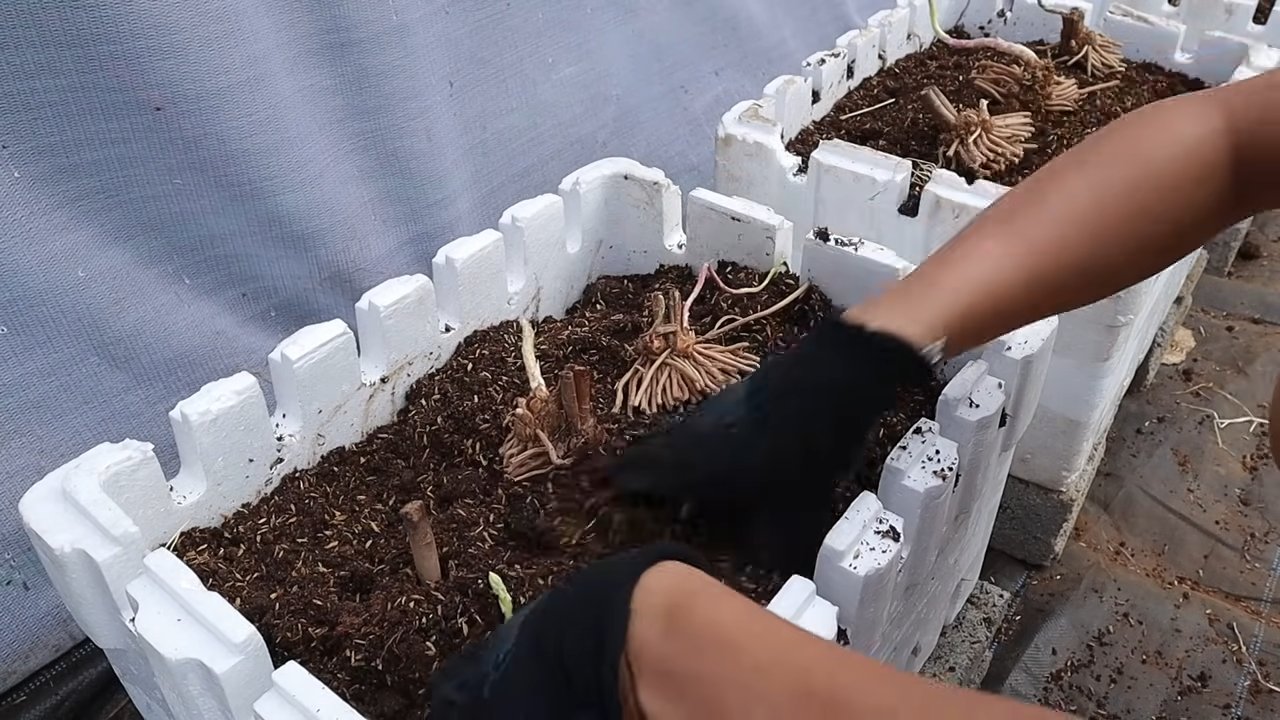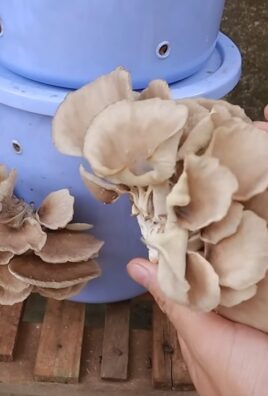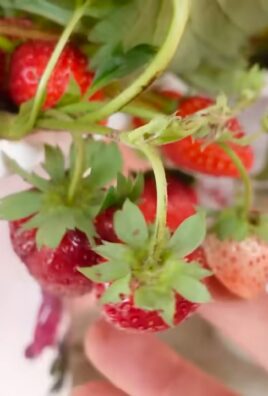Harvest asparagus at home like a seasoned pro! Have you ever dreamed of strolling into your backyard and snipping off fresh, vibrant asparagus spears for dinner? It’s not just a dream; it’s an achievable reality with a little know-how. For centuries, asparagus has been prized for its delicate flavor and nutritional benefits, gracing the tables of royalty and commoners alike. From ancient Rome, where it was considered a delicacy, to modern-day gardens, asparagus has stood the test of time.
But why should you bother learning how to harvest asparagus at home? Well, store-bought asparagus simply can’t compare to the taste and freshness of homegrown. Plus, it’s incredibly rewarding to nurture your own food source. Imagine the satisfaction of serving a meal featuring asparagus you cultivated yourself! This DIY guide will equip you with the essential tricks and hacks to ensure a bountiful harvest, year after year. We’ll cover everything from identifying the perfect time to harvest to proper cutting techniques, ensuring you maximize your yield and keep your asparagus patch thriving. Let’s get started and unlock the secrets to a delicious and sustainable harvest!

Harvesting Asparagus Like a Pro: A DIY Guide
Okay, so you’ve nurtured your asparagus bed, patiently waited, and now those delicious spears are finally popping up! Harvesting asparagus is a rewarding experience, but it’s crucial to do it right to ensure a healthy and productive plant for years to come. Don’t worry, I’m here to guide you through the process. Let’s get started!
Understanding Asparagus Growth
Before we dive into the harvesting process, let’s quickly understand how asparagus grows. Asparagus is a perennial plant, meaning it lives for many years. The spears we eat are actually the young shoots of the plant. The plant stores energy in its roots (called the crown) during the growing season, and this energy is used to produce spears the following spring.
Key to a successful harvest: The key to a successful asparagus harvest is to allow the plant to establish itself properly before you start harvesting heavily. This ensures the crown has enough energy to produce spears year after year.
When to Start Harvesting
Knowing when to start harvesting is crucial. Here’s a general guideline:
* Year 1: Resist the urge! Don’t harvest any spears in the first year after planting. This allows the plant to focus on developing a strong root system.
* Year 2: You can harvest lightly for a few weeks. Pick only the thickest spears and stop harvesting early in the season.
* Year 3 and Beyond: Now you can enjoy a full harvest! You can harvest for 6-8 weeks, depending on the vigor of your plants.
Important Note: If your asparagus plants are weak or spindly, even in their third year, it’s best to hold off on heavy harvesting for another year. Patience is key!
Identifying Harvestable Spears
Not every spear is ready for harvesting. Here’s what to look for:
* Spear Thickness: Aim for spears that are at least as thick as a pencil. Thicker spears are more mature and will have a better flavor.
* Spear Height: Spears should be 6-10 inches tall.
* Tightly Closed Tips: The tips of the spears should be tightly closed. If the tips are starting to open up and fern out, the spear is past its prime and will be tougher.
Pro Tip: Check your asparagus bed daily during the peak harvesting season. Asparagus can grow several inches in a single day!
Tools You’ll Need
You don’t need a lot of fancy equipment to harvest asparagus. Here’s what I recommend:
* Asparagus Knife or Sharp Knife: A specialized asparagus knife has a serrated blade and a forked tip, making it easy to cut the spear below the soil surface. However, a sharp kitchen knife will also work just fine.
* Basket or Bucket: To collect your harvested spears.
* Gloves (Optional): Asparagus plants can sometimes have prickly leaves, so gloves can protect your hands.
Harvesting Methods: Cut vs. Snap
There are two main methods for harvesting asparagus: cutting and snapping.
* Cutting: This involves using a knife to cut the spear below the soil surface.
* Snapping: This involves bending the spear until it snaps off at its natural breaking point.
My Preference: I prefer cutting because it’s less likely to damage the crown of the plant. Snapping can sometimes pull up the crown or damage nearby spears.
Step-by-Step Harvesting Guide (Cutting Method)
Alright, let’s get to the nitty-gritty of harvesting! Here’s a step-by-step guide using the cutting method:
1. Prepare Your Tools: Gather your asparagus knife (or sharp knife), basket, and gloves (if using).
2. Locate Harvestable Spears: Walk through your asparagus bed and identify spears that meet the criteria mentioned earlier (thickness, height, and tightly closed tips).
3. Position Your Knife: Carefully insert your knife into the soil about 1-2 inches below the surface, close to the base of the spear.
4. Cut the Spear: Gently cut the spear at an angle. Be careful not to damage the crown or nearby spears.
5. Remove the Spear: Carefully lift the cut spear out of the soil.
6. Repeat: Continue harvesting all the mature spears in your bed.
7. Store Your Harvest: Place the harvested spears in your basket or bucket.
Important Note: Avoid cutting too close to the crown, as this can damage it.
Step-by-Step Harvesting Guide (Snapping Method)
If you prefer the snapping method, here’s how to do it:
1. Locate Harvestable Spears: As with the cutting method, identify spears that are ready for harvesting.
2. Gently Bend the Spear: Hold the spear near the base and gently bend it until it snaps. The spear should break at its natural breaking point, which is usually where the spear becomes tough.
3. Remove the Spear: Carefully lift the snapped spear out of the soil.
4. Repeat: Continue harvesting all the mature spears in your bed.
5. Store Your Harvest: Place the harvested spears in your basket or bucket.
Caution: Be careful not to pull up the crown when snapping the spears.
Post-Harvest Care
After harvesting, there are a few things you can do to keep your asparagus plants healthy and productive:
* Watering: Water your asparagus bed regularly, especially during dry periods.
* Fertilizing: Fertilize your asparagus plants with a balanced fertilizer in the spring and after the harvesting season.
* Weeding: Keep your asparagus bed free of weeds, as they can compete with the plants for nutrients and water.
* Mulching: Apply a layer of mulch around your asparagus plants to help retain moisture, suppress weeds, and regulate soil temperature.
Remember: Healthy plants produce more spears!
Extending Your Harvest Season
Want to enjoy asparagus for a longer period? Here are a few tips:
* Plant Different Varieties: Some asparagus varieties mature earlier than others. Planting a mix of varieties can extend your harvest season.
* Succession Planting: Plant new asparagus crowns every few years to ensure a continuous supply of spears.
* Cold Frames or Row Covers: Using cold frames or row covers can help warm the soil earlier in the spring, allowing you to start harvesting sooner.
Dealing with Common Asparagus Problems
Even with the best care, asparagus plants can sometimes encounter problems. Here are a few common issues and how to address them:
* Asparagus Beetles: These beetles can damage asparagus spears and ferns. Handpick them off the plants or use an insecticidal soap.
* Asparagus Rust: This fungal disease can cause orange or brown spots on the ferns. Improve air circulation around the plants and use a fungicide if necessary.
* Fusarium Crown and Root Rot: This soilborne disease can cause the plants to wilt and die. Plant asparagus in well-drained soil and avoid overwatering.
Prevention is Key: Regularly inspect your asparagus plants for signs of pests or diseases and take action promptly.
Storing Your Harvested Asparagus
Freshly harvested asparagus tastes the best, but if you can’t eat it right away, here’s how to store it:
* Refrigerate: Wrap the asparagus spears in a damp paper towel and store them in a plastic bag in the refrigerator. They should last for up to a week.
* Stand in Water: You can also stand the asparagus spears upright in a jar or glass with about an inch of water. Cover the tops with a plastic bag and refrigerate. This will help keep them fresh and crisp.
* Freezing: Asparagus can be frozen for longer storage. Blanch the spears in boiling water for 2-3 minutes, then plunge them into ice water to stop the cooking process. Drain well and freeze in a single layer on a baking sheet. Once frozen, transfer the spears to a freezer bag or container.
Enjoy Your Harvest: Asparagus is delicious steamed, roasted, grilled, or added to soups and salads.
Troubleshooting Your Asparagus Harvest
Sometimes things don’t go exactly as planned. Here are some common issues you might encounter and how to troubleshoot them:
* Thin Spears: If your asparagus spears are consistently thin, it could be a sign that the plants are not getting enough nutrients or water. Fertilize and water regularly. It could also mean the plants are overcrowded; consider thinning them out.
* Few Spears: If your plants are producing very few spears, it could be due to a number of factors, including poor soil, lack of sunlight, or disease. Amend the soil with compost, ensure the plants are getting at least 6 hours of sunlight per day, and address any disease issues.
* Spears Fern Out Quickly: If the

Conclusion
So, there you have it! Mastering the art of harvesting asparagus at home is not just about saving money; it’s about connecting with your food, enjoying the freshest possible flavor, and experiencing the satisfaction of nurturing your own little patch of green goodness. This DIY trick transforms a simple vegetable into a source of pride and culinary delight.
Why is this a must-try? Because store-bought asparagus simply can’t compare to the crisp, sweet taste of freshly harvested spears. The moment you cut that spear and bring it inside, the sugars begin to convert to starch, diminishing the flavor. Harvesting your own asparagus allows you to enjoy it at its peak, bursting with flavor and nutrients. Plus, it’s an incredibly rewarding experience to watch your asparagus patch thrive and provide you with a delicious harvest year after year.
But the benefits don’t stop there. By harvesting your asparagus properly, you’re actually encouraging the plant to produce even more spears. It’s a win-win situation! You get to enjoy a bountiful harvest, and your asparagus plants become stronger and more productive over time.
Looking for variations? Consider these ideas to elevate your asparagus game:
* **Grilled Asparagus with Lemon and Parmesan:** A classic for a reason! Simply toss your freshly harvested asparagus with olive oil, salt, and pepper, grill until tender-crisp, and then squeeze fresh lemon juice over the top and sprinkle with grated Parmesan cheese.
* **Asparagus and Goat Cheese Tart:** A sophisticated and elegant dish perfect for entertaining. Use a store-bought puff pastry crust, spread with goat cheese, and top with your freshly harvested asparagus spears. Bake until golden brown and bubbly.
* **Asparagus Soup:** A creamy and comforting soup that’s perfect for a chilly evening. Sauté onions and garlic, add your asparagus spears, vegetable broth, and cream, and simmer until tender. Puree with an immersion blender and season to taste.
* **Pickled Asparagus:** Preserve your harvest for later enjoyment! Pickled asparagus is a tangy and delicious addition to salads, charcuterie boards, or even as a snack straight from the jar.
Don’t be intimidated by the idea of growing and harvesting your own asparagus. It’s easier than you might think, and the rewards are well worth the effort. With a little patience and care, you’ll be enjoying fresh, delicious asparagus from your own garden for years to come.
We wholeheartedly encourage you to try this DIY trick and experience the joy of harvesting asparagus at home. It’s a simple yet profound way to connect with nature, enhance your culinary skills, and enjoy the freshest possible produce.
Once you’ve tried it, we’d love to hear about your experience! Share your photos, tips, and recipes with us in the comments below. Let’s build a community of asparagus enthusiasts and inspire others to embrace the joys of homegrown goodness. What are you waiting for? Get out there and start harvesting!
Frequently Asked Questions (FAQ)
How do I know when my asparagus is ready to harvest?
The best time to harvest asparagus is when the spears are about 6-8 inches tall and the tips are still tightly closed. The thickness of the spear is also a good indicator of maturity. You want to harvest spears that are at least as thick as a pencil. Avoid harvesting very thin spears, as these are still developing and need to grow larger. Also, the first year or two after planting, it’s best to let the asparagus grow without harvesting to allow the plants to establish a strong root system.
What’s the best way to harvest asparagus without damaging the plant?
There are two main methods for harvesting asparagus: snapping and cutting. Snapping involves bending the spear near the base until it snaps off. This is a quick and easy method, but it can sometimes leave a jagged edge that can be susceptible to disease. Cutting involves using a sharp knife or asparagus knife to cut the spear at or slightly below the soil surface. This method is more precise and less likely to damage the plant. Whichever method you choose, be sure to avoid damaging the crown of the plant, which is the central part from which the spears emerge.
How often should I harvest my asparagus?
During the peak harvesting season, you may need to harvest your asparagus every day or every other day. The spears can grow quite quickly, especially in warm weather. Check your plants regularly and harvest any spears that are ready. As the season progresses, the spears will become thinner and less productive. At this point, it’s time to stop harvesting and allow the plants to fern out.
What does “ferning out” mean, and why is it important?
“Ferning out” refers to the process where the asparagus spears are allowed to grow into tall, feathery plants. This is an essential part of the asparagus plant’s life cycle. The ferns photosynthesize and produce energy that is stored in the roots, which will fuel the next year’s growth. It’s crucial to allow your asparagus plants to fern out after the harvesting season is over. Do not cut back the ferns until they turn brown in the fall or winter.
How do I care for my asparagus plants after the harvesting season?
After the harvesting season, continue to water and fertilize your asparagus plants regularly. This will help them to build up their energy reserves for the next year. You can use a balanced fertilizer or a fertilizer specifically formulated for asparagus. Be sure to remove any weeds that are growing around your plants, as they can compete for nutrients and water. In the fall or winter, after the ferns have turned brown, you can cut them back to the ground.
Can I grow asparagus in containers?
Yes, you can grow asparagus in containers, but it requires a large container and well-draining soil. Choose a container that is at least 18 inches deep and wide. Use a high-quality potting mix that is amended with compost or other organic matter. Be sure to water your container-grown asparagus regularly, especially during hot weather. You may also need to fertilize more frequently than you would with asparagus grown in the ground.
What are some common pests and diseases that affect asparagus?
Some common pests that affect asparagus include asparagus beetles, aphids, and spider mites. Diseases that can affect asparagus include rust, fusarium crown and root rot, and purple spot. You can prevent many of these problems by providing your asparagus plants with good drainage, proper air circulation, and regular fertilization. If you do encounter pests or diseases, there are a variety of organic and conventional treatments available.
How long will my asparagus plants produce?
With proper care, asparagus plants can produce for 15-20 years or even longer. This makes them a worthwhile investment for any gardener who enjoys fresh asparagus. By following the tips in this guide, you can ensure that your asparagus plants thrive and provide you with a bountiful harvest for many years to come.




Leave a Comment